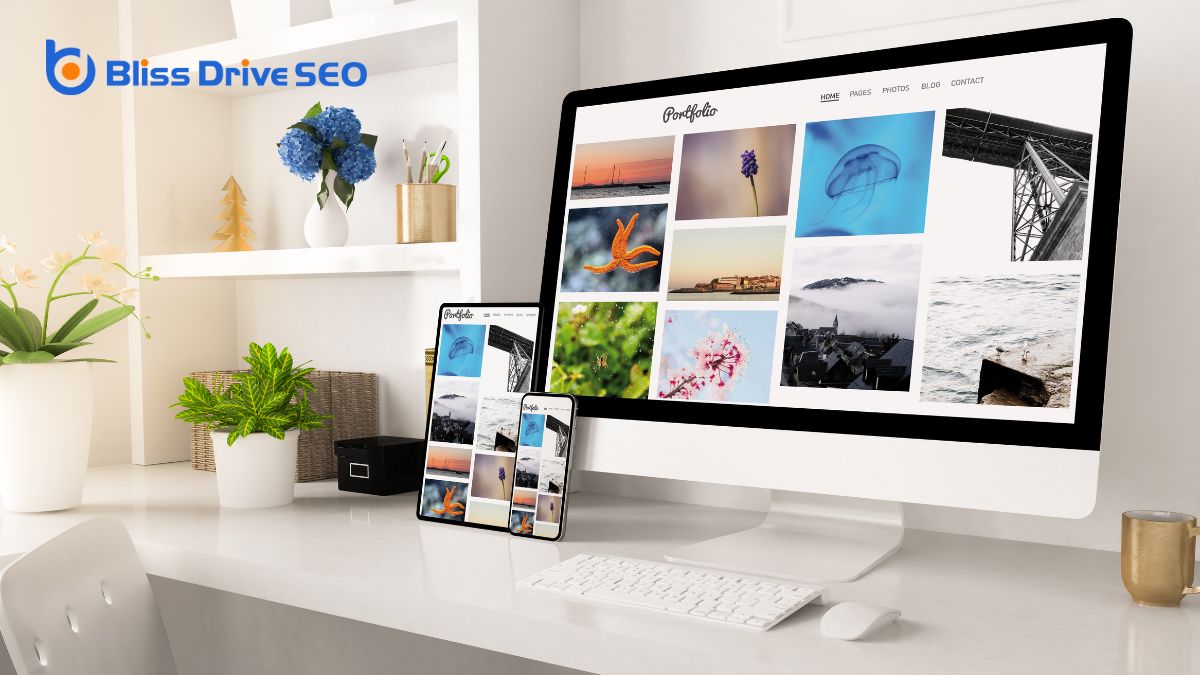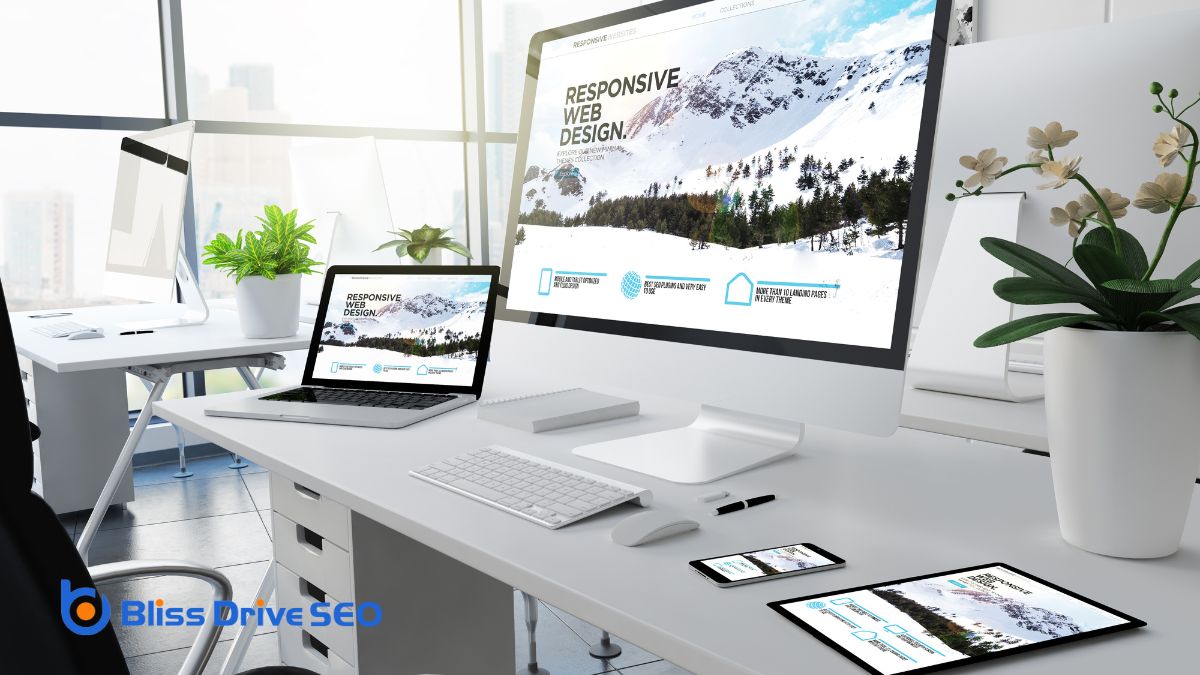Learn More About Us

Optimizing your images for search engines can greatly enhance your site's visibility and user experience. Start by choosing the appropriate image format like JPEG, PNG, or WebP to balance quality and performance. Name your files descriptively, incorporating relevant keywordsWords or phrases that users type into search engines to find information.. Write alt textDescriptions added to images to help search engines understand the content of images. that is both descriptive and SEO-friendly without overusing keywords. Compress images to enhance load time using tools like ShortPixel. Implement responsive images with srcset to ensure they adjust to different devices. Finally, use structured data to help search engines better comprehend your images for enhanced ranking. By following these best practices, you stand to gain even more insights.

Choosing the right image format is important for both display quality and page load speed. When optimizing images for your website, understanding the strengths of each file format guarantees you deliver the best user experience.
JPEG is a versatile file format that uses lossy compression, allowing you to adjust quality for faster loading times without notable loss. It's perfect for photographs and images where detail isn't as essential.
For images requiring high detail and transparency, PNG is your go-to. This format supports lossless compression, preserving image quality and transparency, making it ideal for graphics and illustrations. However, PNG files are typically larger than JPEGs, which can impact loading times.
WebP is a newer format that combines the best of both worlds—offering smaller file sizes with comparable quality to JPEG and PNG. Using WebP can greatly enhance your site's loading times without sacrificing quality.
Lastly, SVG is a vector-based format perfect for logos and icons. Being scalable, it ensures your images look sharp on any screen size, vital for responsive web designs. By choosing the right format, you balance quality and performance, enhancing your site's overall efficiency.
After selecting the appropriate image format, it's equally important to pay attention to how you name your image files. Using descriptive, keyword-rich image file names is pivotal for improving SEO and helping search engines understand your image content. Instead of sticking with default file names like "IMG1234.jpg," rename your files to something more meaningful and relevant to the content of the image.
Descriptive file names enhance search engine crawlers' understanding and indexing of your images. For instance, if you have an image of a red sports car, a file name like "red-sports-car.jpg" is much more effective than a generic one. This practice is essential for optimizing your images for search engine visibility.
When writing SEO-friendly alt text, focus on creating descriptive, meaningful text that accurately describes the image. This not only helps search engines understand your content but also enhances accessibility for visually impaired users.
Descriptive alt text is vital for both accessibility and SEO, acting as a bridge between your images and search engine crawlers. When you use descriptive alt text, you're not just helping search engines understand your image content better but also ensuring that visually impaired users can grasp the context of your images. This aligns with the American Disabilities Act, which emphasizes the necessity for meaningful alt text.
By providing detailed descriptions, you offerThe specific product or service being promoted by affiliates. more context for search engines, making your images more discoverable and relevant. It's pivotal to focus on writing concise and relevant alt text, avoiding keyword stuffing. Not only does this practice improve your SEO, but it also enhances image accessibility for users relying on screen readers.
Think of descriptive alt text as a way to describe your image content clearly and accurately. For example, instead of writing "flower" for an image of a rose, you could write "red rose in full bloom in a garden." This way, you provide a more vivid and useful description that benefits both SEO and accessibility.
Overloading your alt text with keywords, known as keyword cramming, can do more harm than good for your SEO strategy. When crafting alt text, it's vital to be both descriptive and relevant to the image. This practice not only helps visually impaired users understand what the image depicts but also aids search engines in indexingThe process of adding web pages into a search engine's database. your content effectively.
Instead of cramming your alt text with keywords, focus on providing meaningful descriptions that enhance user experience and accessibility compliance. Overuse of keywords can leadA potential customer referred by an affiliate who has shown interest in the product or service but h... to penalties from search engines, diminishing your site's ranking and overall user experience.
Here are three key practices to avoid keyword cramming and write effective alt text:
Compressing images efficiently is necessary for optimizing your website's performance. When you reduce the file sizes of your images, you're not only enhancing page load times but also improving the overall user experience. High-quality compression tools like ShortPixel and TinyJPG can strip unnecessary metadataData that provides information about other data, such as its source, format, and usage., making your images lighter and more effective. These tools are essential for achieving the best performance without compromising too much on image quality.
Using the WebP format is another wise move. WebP offers quick loading times with small file sizes compared to traditional formats like JPEG or PNG. This means your site will load faster, which is particularly important for mobile optimizationDesigning and formatting web content to ensure it performs well on mobile devices.. Remember, a faster-loading site keeps visitors engaged and reduces bounce rates.
Finding the right compression rate is a balancing act. You want your images to maintain good quality while having small file sizes. A high compression rate might reduce visual appeal, but too low a rate won't greatly improve loading times. Aim for a middle ground where your images are compressed enough for fast loading but still look great.

Ensuring your images are adaptable is vital for delivering an optimal user experience across all devices. Adaptive designDesigning webpages to adjust to different screen sizes and devices, similar to responsive design. helps your images adjust to various screen sizes, which is essential for enhancing SEO performance and reducing loading times. Here's how to effectively implement adaptable images:
In addition to making your images flexible, leveraging structured data can greatly enhance their visibility and search rankingsThe position at which a website appears in the SERP.. By implementing structured data for your images, you help search engines better comprehend the image content and context. This means that your images are more likely to appear in relevant search engine results, giving them a higher chance of being viewed by your target audience.
Using schema markupCode added to a website to help search engines understand the content., you can provide specific details about your images, such as descriptions, locations, and authorship. These details add rich information to your images, making them more informative and attractive in search engine results. When search engines can clearly understand what your images represent, they're more likely to rank them higher, improving your overall image SEO.
Moreover, well-implemented structured data can lead to increased click-through rates. When users see detailed and relevant information about your images in search results, they're more likely to click on them. This not only enhances your visibility but also drives more traffic to your website.
To optimize your images for SEO, use descriptive alt text, compress file sizes, and rename files with relevant keywords. Implement structured data and choose the right format. These steps help search engines understand and rank your images better.
For SEO, you should use WebP for smaller file sizes and faster loading. JPEG works well for photos. PNG is great for transparency. SVG is best for logos and icons. Choose based on your specific needs.
SEO for images works by optimizing alt text, file names, and metadata. It helps search engines understand your images, improving rankings and traffic. Don't forget to optimize dimensions and file sizes for faster loading and a better user experience.
You should optimize your content with relevant keywords, create high-quality backlinksLinks from other websites pointing to your website, crucial for SEO., and improve site speed. Don't forget to make your site mobile-friendly, use descriptive meta tagsHTML tags that provide information about a web page to search engines and visitors., and regularly update your content to boost SEO performance.
Incorporating these best practices for image SEO will boost your website's visibility and user experience. Choose the right image format, optimize file names, and write SEO-friendly alt text to make your images more accessible. Don't forget to compress images to improve load times and implement responsive images for better adaptability. Finally, utilize structured data to help search engines understand your content. With these steps, you'll enhance your site's SEO and engage your audience more effectively.
